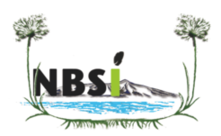Drinking water
The availability and the quality of drinking water remain a burning issue at Lake Naivasha. Communities residing around the lake must develop their own water supplies and even Naivasha Town dwellers often find themselves deprived of safe drinking water.
Part of the problem resides in the basin geology and in the particularly high levels of fluoride present in the volcanic bedrock as well as in groundwater. Above a safety level set at 1 mg L-1 by the World Health Organization, fluoride is able to replace calcium during the formation of teeth and bones making them brittle. Fluorosis represents a particularly high risk for children and young people that are still in growing age.
The lake water contains about 1.5 mg F per Litre and could be healthier than groundwater if bacterial contamination was cut down through boiling; however, access points that would allow local inhabitatns to approach the water shore are greatly restricted in number and there are no available facilities to pump water from the lake for developing a safe drinking water supply.
Most people still rely on F-rich groundwater that is partially defluorinated by passing through large tanks filled with charred animal bones. In such systems, part of the fluoride exchanges for the bone calcium and is removed from the solution phase.
Rainwater represents an excellent solution for a F-poor good quality water source, but rains tend to be scarce and concentrated into few intense rain events. In addition, gutters, pipes and tanks needed to build water harvesting facilities constitute a significant financial challenge for the resident population.



